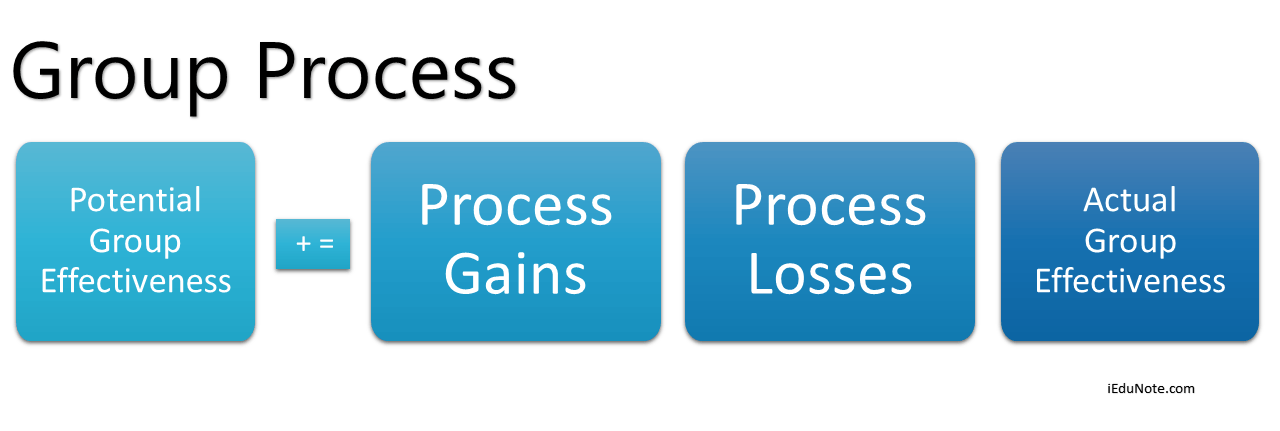Discover Organizational Behavior: explore it’s definition, importance, nature, objectives, challenges, limitations, approaches, models, and more.
History and Evolution of Organisational Behavior Studies
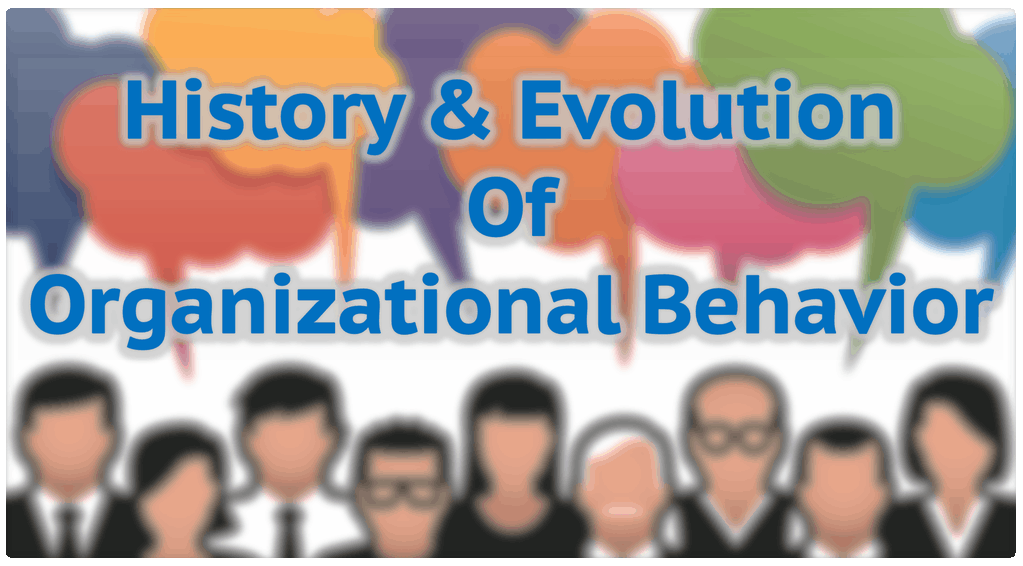
The origin of Organizational Behaviour can trace its roots back to Max Weber and earlier organizational studies.
The Industrial Revolution is the period from approximately 1760 when new technologies resulted in the adoption of new manufacturing techniques, including increased mechanization.
The industrial revolution led to significant social and cultural change, including new forms of organization.
Analyzing these new organizational forms, sociologist Max Weber described bureaucracy as an ideal type of organization that rested on rational-legal principles and maximized technical efficiency.
In the 1890s, with the arrival of scientific management and Taylorism, Organizational Behavior Studies was forming it as an academic discipline.
Failure of scientific management gave birth to the human relations movement characterized by a heavy emphasis on employee cooperation and morale.
Human Relations Movement from the 1930s to 1950s contributed to shaping Organizational Behavior studies.
Works of scholars like Elton Mayo, Chester Barnard, Henri Fayol, Mary Parker Follett, Frederick Herzberg, Abraham Mas low, David Mc Cellan, and Victor Vroom contributed to the growth of Organisational Behaviour as a discipline.
Works of scholars like Elton Mayo, Chester Barnard, Henri Fayol, Mary Parker Follett, Frederick Herzberg, Abraham Maslow, David Mc Cellan, and Victor Vroom contributed to the growth of Organisational Behaviour as a discipline.
Herbert Simon’s Administrative Behavior introduced a number of important concepts to the study of organizational behavior, most notably decision-making.
Simon and Chester Barnard argued that people make decisions differently in organizations than outside. Simon was awarded the Nobel Prize in Economics for his work on organizational decision making.
In the 1960s and 1970s, the field became more quantitative and produced such ideas as an informal organization and resource dependence. Contingency theory, institutional theory, and organizational ecology are also enraged.
Starting in the 1980s, cultural explanations of organizations and organizational change became areas of study.
Informed by anthropology, psychology, and sociology, qualitative research became more acceptable in OB.
What is Organizational Behavior?
Organizational Behavior (OB) is the study of human behavior in organizational settings, the interface between human behavior, the organization, and the organization itself.
Organizational Behavior researchers study the behavior of individuals primarily in their organizational roles.
One of the main goals of organizational behavior is to revitalize organizational theory and develop a better conceptualization of organizational life.
As a multidisciplinary field, organizational behavior has been influenced by developments in a number of allied disciplines, including sociology, psychology, economics, and engineering, as well as by the experience of practitioners.
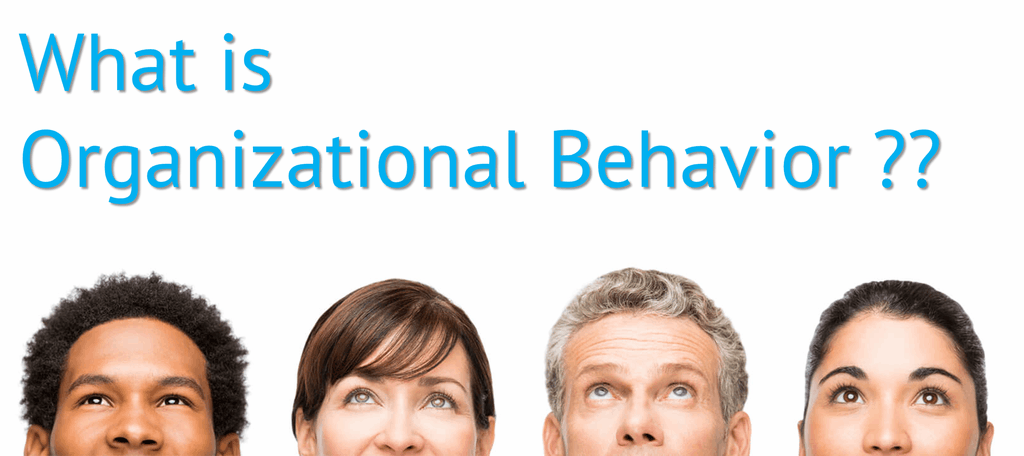
Organizational behavior is directly concerned with the understanding, prediction, and control of human behavior in organizations. Organizational behavior is the study of both group and individual performance and activity within an organization.
This area of study examines human behavior in a work environment and determines its impact on job structure, performance, communication, motivation, leadership, etc.
It is the systematic study and application of knowledge about how individuals and groups act within their work organizations. OB draws from other disciplines to create a unique field.
For example, when we review topics such as personality and motivation, we will again review studies from the field of psychology. The topic of team processes relies heavily on the field of sociology.
When we study power and influence in organizations, we borrow heavily from political sciences.
Even medical science contributes to the organizational behavior field, particularly in studying stress and its effects on individuals.
There is increasing agreement as to the components or topics that constitute the subject area of OB.
Although there is still considerable debate as to the relative importance of change, there appears to be general agreement that OB includes the core topics of motivation, leader behavior and power, interpersonal communication, group structure and processes, learning, attitude development, and perception, change processes, conflict, work design, and work stress.
Features of Organizational Behavior
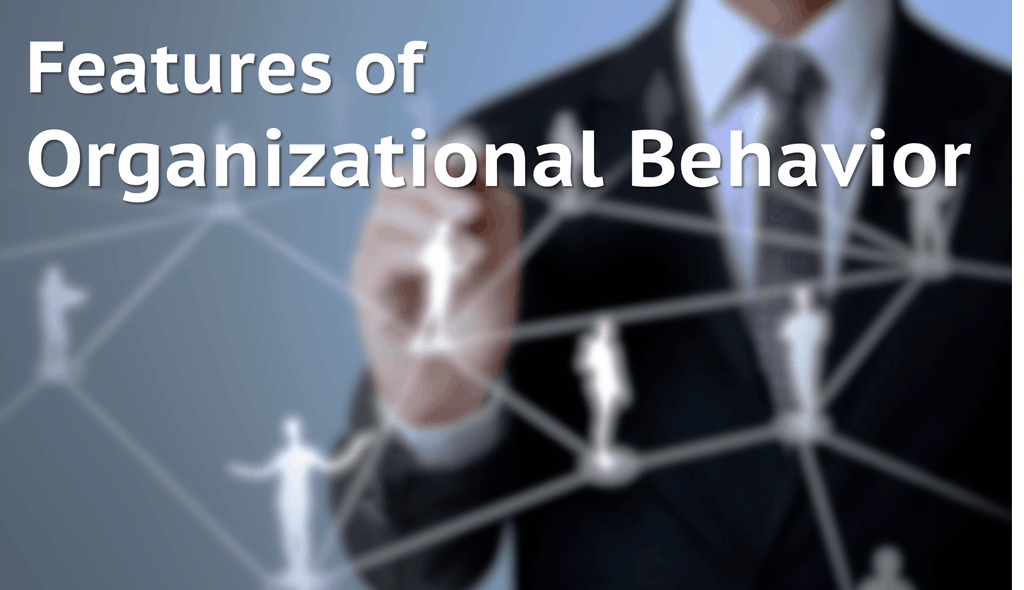
Organizational behavior is the study and application of knowledge about how people, individuals, and groups act in organizations. It does this by taking a system approach.
It interprets people-organization relationships in terms of the whole person, the whole group, the whole organization, and the whole social system.
Its purpose is to build better relationships by achieving human, organizational, and social objectives.
Organizational Behavior is;
- A Separate Field of Study and not a Discipline Only.
- An Interdisciplinary Approach.
- Applied Science.
- Normative Science.
- A Humanistic and Optimistic Approach.
- A Total System Approach.
These 6 features or characteristics show the nature of Organizational behavior which is the study of understanding and controlling behavior within the organization.
Objectives of Organizational Behavior

The organizations in which people work have an effect on their thoughts, feelings, and actions. These thoughts, feelings, and actions, in turn, affect the organization itself.
Organizational behavior studies the mechanisms governing these interactions, seeking to identify and foster behaviors conducive to the survival and effectiveness of the organization.
- Job Satisfaction.
- Finding the Right People.
- Organizational Culture.
- Leadership and Conflict Resolution.
- Understanding Employees Better.
- Understand how to Develop Good Leaders.
- Develop a Good Team.
- Higher Productivity.
These 8 objectives of organizational behavior show that OB is concerned with people within the organization, how they interact, what is the level of their satisfaction, the level of motivation, and finding ways to improve it in a way that yields the most productivity.
Fundamental Concepts of Organizational Behavior
Organization Behavior is based on a few fundamental concepts which revolve around the nature of people and organizations.
- Individual Differences.
- Perception.
- A Whole Person.
- Motivated Behavior.
- The desire for Involvement.
- The value of the Person.
- Human Dignity.
- Organizations are Social Systems.
- Mutuality of Interest.
- Holistic Concept.
Main Challenges and Opportunities of Organizational Behavior
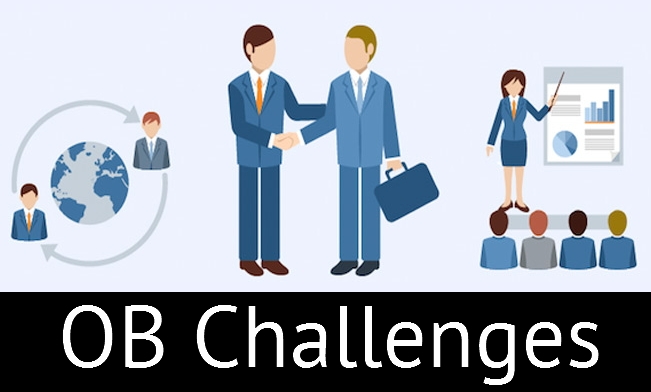
Challenges and opportunities of organizational behavior are massive and rapidly changing for improving productivity and meeting business goals.
- Improving Peoples’s Skills.
- Improving Quality and Productivity.
- Total Quality Management (TQM).
- Managing Workforce Diversity.
- Responding to Globalization.
- Empowering People.
- Coping with Temporariness.
- Stimulating Innovation and Change.
- Emergence of E-Organisation & E-Commerce.
- Improving Ethical Behavior.
- Improving Customer Service.
- Helping Employees Balance Work-Life Conflicts.
- Flattening World.
Read more about 13 Challenges and Opportunities of Organizational Behavior.
Limitations of Organizational Behavior
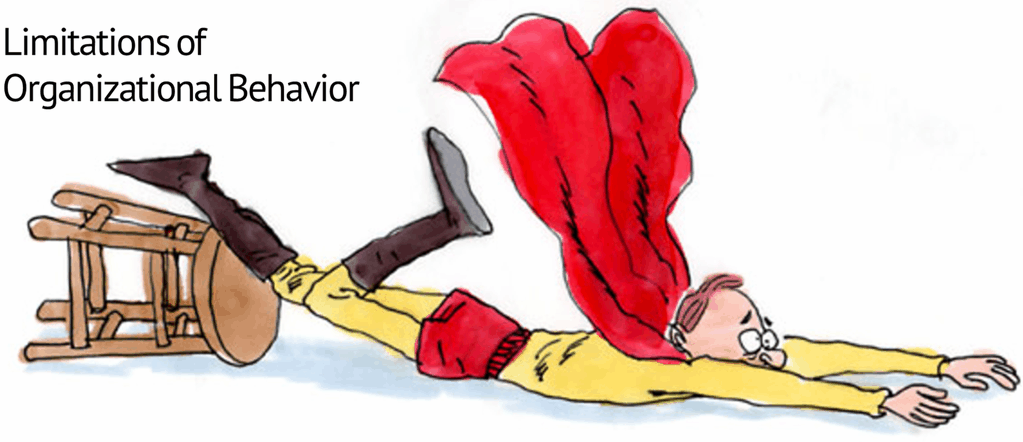
Recognize the limitations of organizational behavior. Organizational behavior will not abolish conflict and frustration; it can only reduce them. It is a way to improve, not an absolute answer to problems.
Furthermore, it is but part of the whole cloth of an organization.
We can discuss organizational behavior as a separate subject, but to apply it, we must tie it to the whole reality. Improved organizational behavior will not solve unemployment.
Organizational behavior will not make up for our deficiencies and cannot substitute for poor planning, inept organizing, or inadequate controls. It is only one of the many systems operating within a larger social system.
3 major limitations of OB are;
- Behavioral Bias.
- The Law of Diminishing Returns.
- Unethical Manipulation of People.
Learn how these organizational behavior limitations work.
Organizational Behavior Model
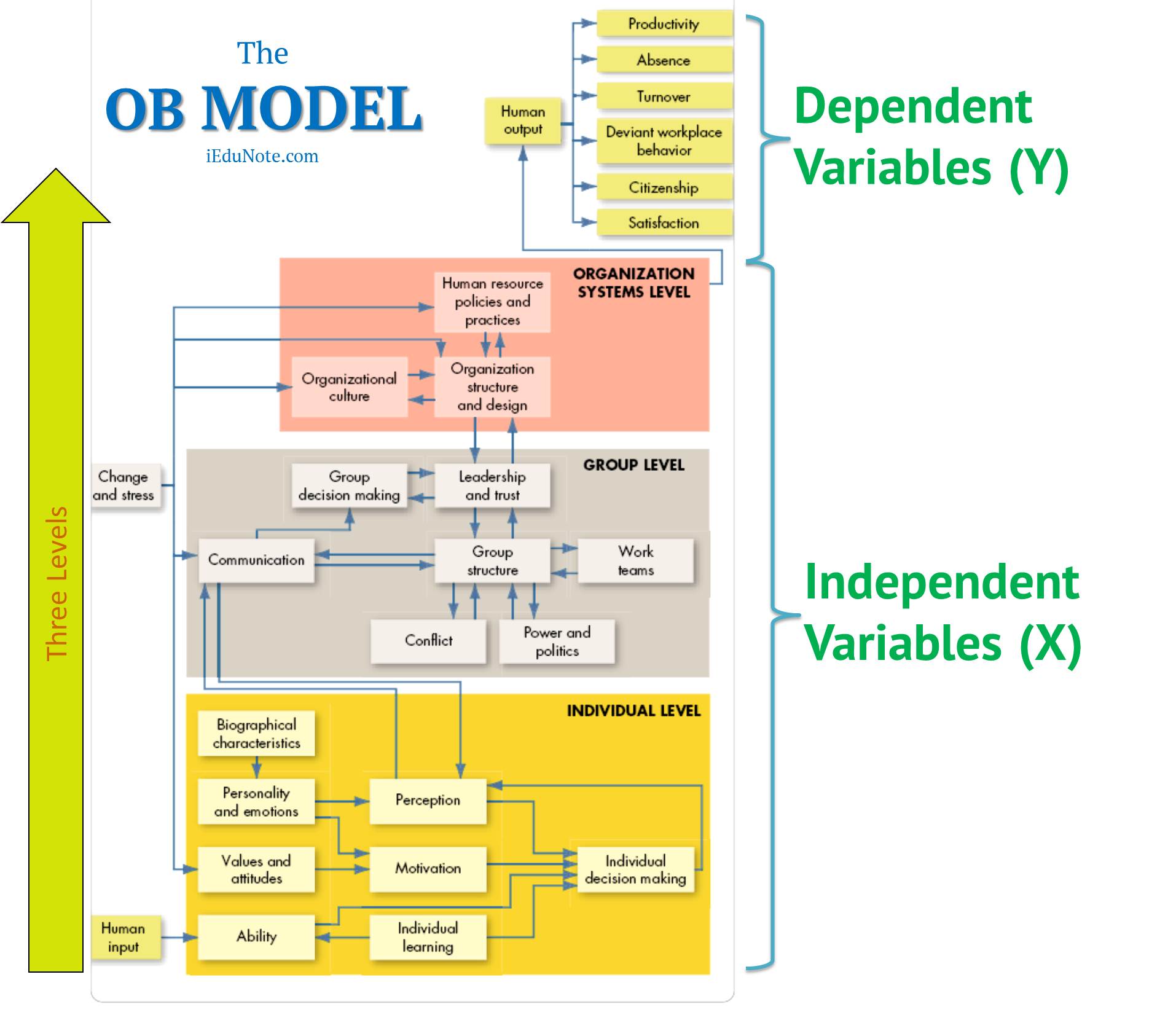
The OB model shows the 3 levels, Individual-level, Group level, and Organization System-level and how they impact the elements of human output.
The above figure presents the skeleton on which constructed the OB model.
It proposes that there are three levels of analysis in OB and that, as we move from the individual level to the organization systems level, we systematically add to our understanding of organizational behavior.
The three basic levels are analogous to building blocks; each is constructed on the previous level.
Group concepts grow out of the foundation laid in the individual section; we overlay constraints on the individual and group to arrive at organizational behavior.
Key Forces Affecting Organizational Behavior
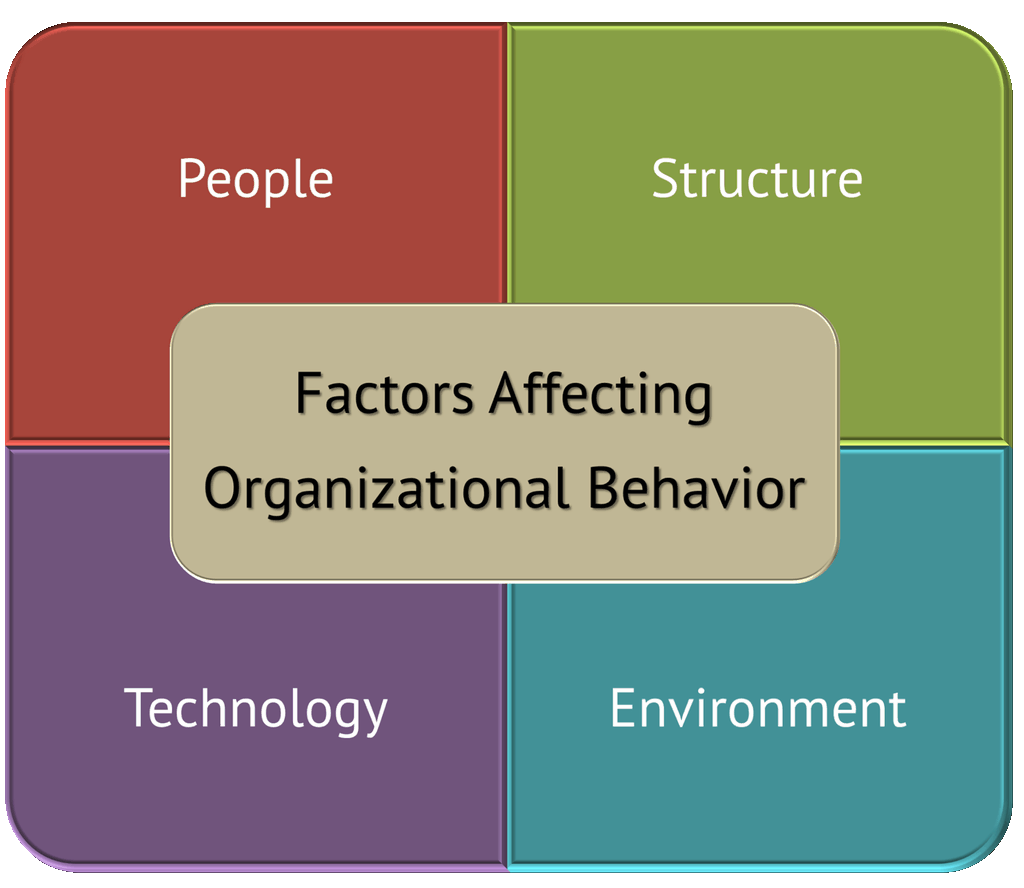
There is a complex set of key forces that affect organizational behavior today. These key forces are classified into four areas;
- People.
- Structure.
- Technology.
- Environment.
There is an interaction between people, structure, and technology, and the environment influences these elements. 4 key forces affecting Organizational behavior and it is applied.
Contributing Disciplines to the Organizational Behavior field
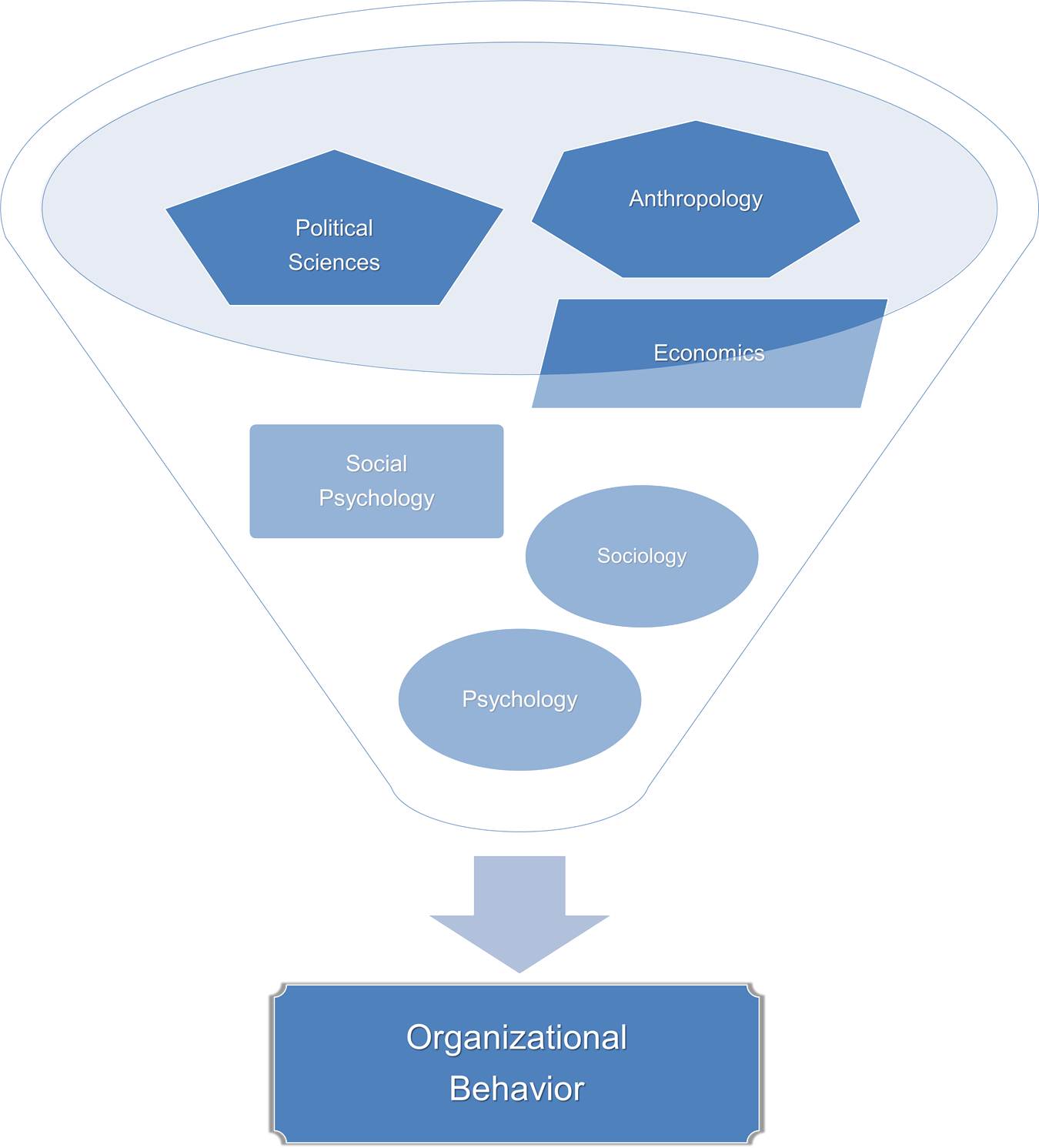
There are some important disciplines in the organizational behavior field that developed it extensively.
Due to the increase in organizational complexity, various types of knowledge are required and help in many ways.
The major disciplines are;
- Psychology.
- Sociology.
- Social Psychology.
- Anthropology.
- Political Sciences.
- Economics.
Learn more about the Contributing Disciplines to the Organizational Behavior field.
4 Approaches to Organizational Behavior studies
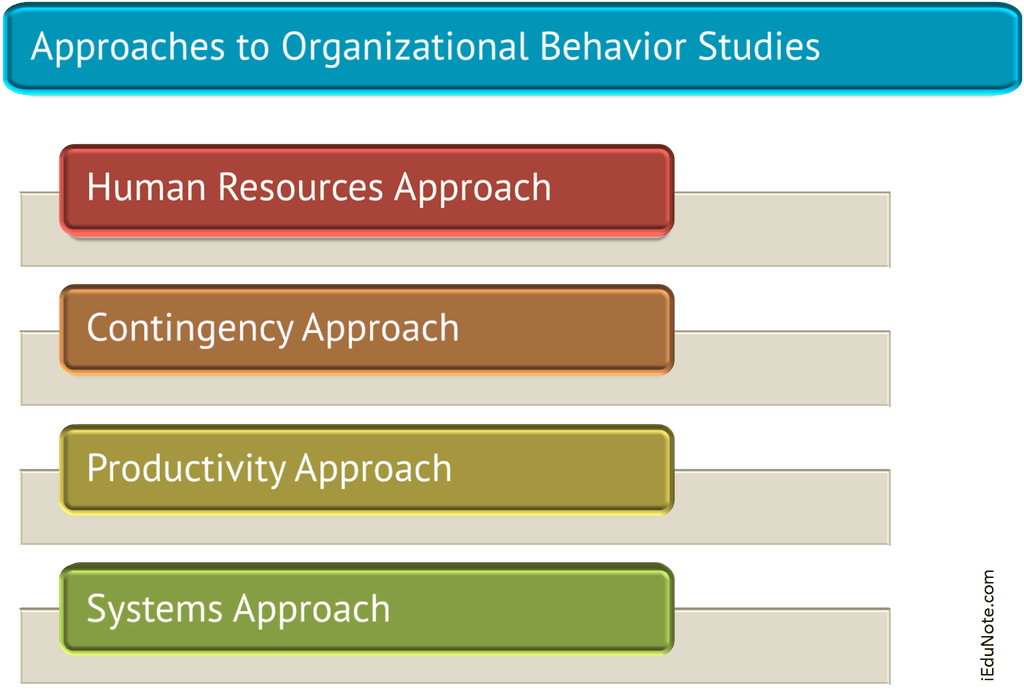
Organizational behavior approaches are a result of the research done by experts in this field.
These experts studied and attempted to quantify research done about the actions and reactions of employees with regard to their work environments.
- Human resources approach.
- Contingency approach.
- Productivity approach.
- Systems approach.
Learn how the 4 Approaches to Organizational Behavior studies work.
Research Methodology of Organizational Behavior
The search for the truth of why people behave the way they do is a very delicate and complicated process.
In fact, the problems are so great that many scholars, Chiefly from the physical and engineering sciences, argue that there can be no precise science of behavior.
The research method of organizational behavior starts with theory, the use of research designs, and checking the validity of studies.
Reasons for Studying Organizational Behavior

Organizational behavior is concerned with studying what people do in an organization and how that behavior affects the organization’s performance.
OB studies put focus on motivation, leader behavior and power, interpersonal communication, group structure and processes, learning, attitude development and perception, change processes, conflict, work design, and work stress.
OB draws heavily from behavioral and social sciences, most importantly from psychology.
There are several practical reasons why we study Organizational behavior;
- OB is the study of learning how to predict human behavior and then apply it in some useful way to make the organization more effective. It helps in the effective utilization of people working in the organization and guarantees the success of the organization.
- OB helps managers to understand the basis of motivation and what they should do to motivate their subordinates.
- OB helps maintain cordial industrial relations, which helps to increase the industry’s overall productivity.
- It helps greatly in improving bur inter-personal relations in the organizations.
- It helps managers apply appropriate motivational techniques in accordance with the nature of individual employees who exhibit a learning difference in many respects.
Conclusion
Organizational behavior is the study and application of knowledge about how people, individuals, and groups act in organizations. It does this by taking a system approach.
That is, it interprets people-organization relationships in terms of the whole person, the whole group, the whole organization, and the whole social system.
Its purpose is to build better relationships by achieving human, organizational, and social objectives. OB encompasses a wide range of topics, such as human behavior, change, leadership, teams, etc.
Organizational behavior has a great impact on individuals and also on organizations that cannot be ignored. To run businesses effectively and efficiently, studying organizational behavior is essential.
